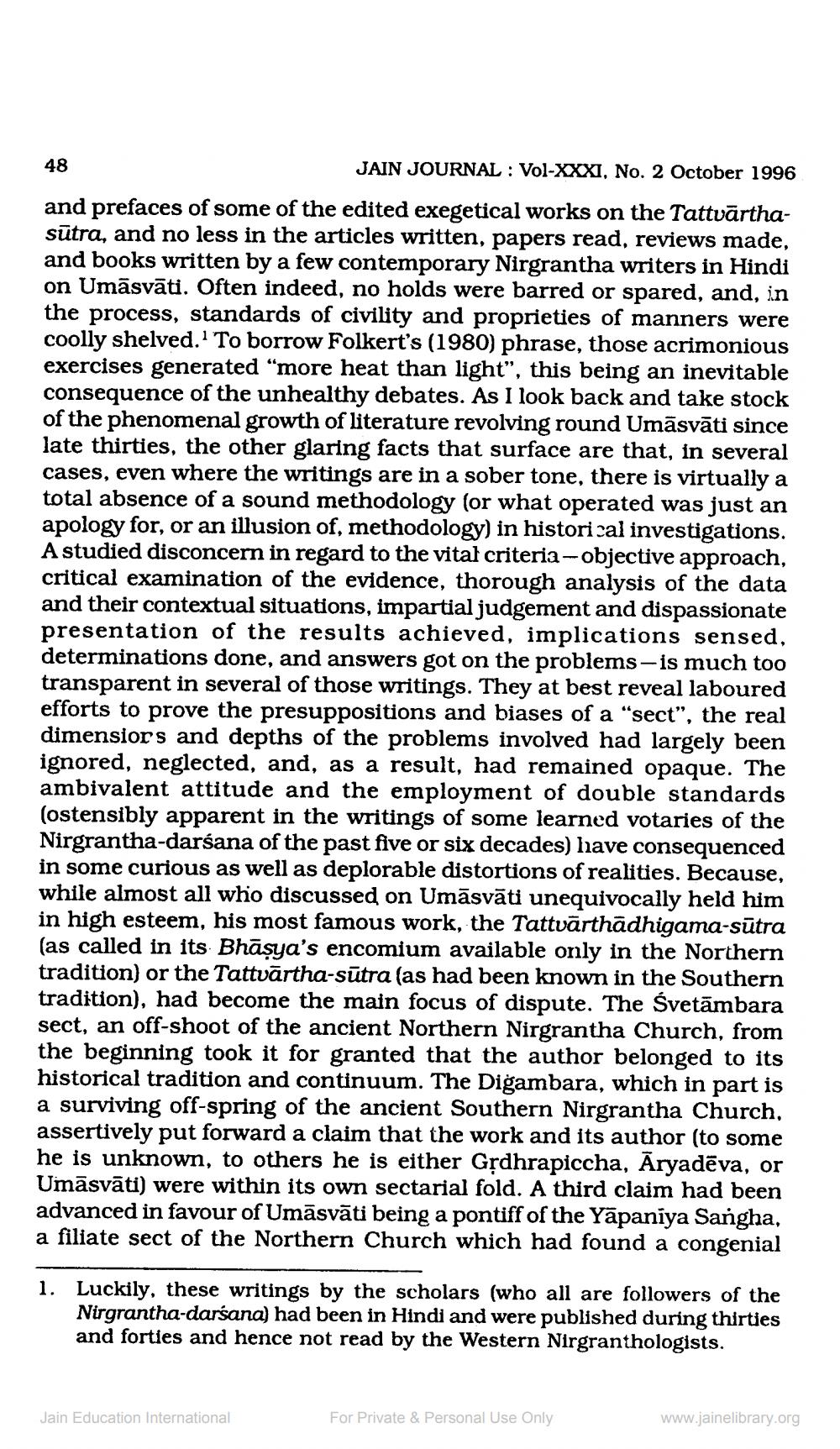Book Title: Jain Journal 1996 10 Author(s): Jain Bhawan Publication Publisher: Jain Bhawan Publication View full book textPage 6
________________ JAIN JOURNAL: Vol-XXXI, No. 2 October 1996 and prefaces of some of the edited exegetical works on the Tattvärthasūtra, and no less in the articles written, papers read, reviews made, and books written by a few contemporary Nirgrantha writers in Hindi on Umāsvāti. Often indeed, no holds were barred or spared, and, in the process, standards of civility and proprieties of manners were coolly shelved. To borrow Folkert's (1980) phrase, those acrimonious exercises generated "more heat than light", this being an inevitable consequence of the unhealthy debates. As I look back and take stock of the phenomenal growth of literature revolving round Umāsvāti since late thirties, the other glaring facts that surface are that, in several cases, even where the writings are in a sober tone, there is virtually a total absence of a sound methodology (or what operated was just an apology for, or an illusion of, methodology) in historical investigations. A studied disconcern in regard to the vital criteria-objective approach, critical examination of the evidence, thorough analysis of the data and their contextual situations, impartial judgement and dispassionate presentation of the results achieved, implications sensed, determinations done, and answers got on the problems-is much too transparent in several of those writings. They at best reveal laboured efforts to prove the presuppositions and biases of a "sect", the real dimensiors and depths of the problems involved had largely been ignored, neglected, and, as a result, had remained opaque. The ambivalent attitude and the employment of double standards (ostensibly apparent in the writings of some learned votaries of the Nirgrantha-darśana of the past five or six decades) have consequenced in some curious as well as deplorable distortions of realities. Because, while almost all who discussed on Umāsvāti unequivocally held him in high esteem, his most famous work, the Tattvärthadhigama-sūtra (as called in its Bhāṣya's encomium available only in the Northern tradition) or the Tattvartha-sutra (as had been known in the Southern tradition), had become the main focus of dispute. The Svetāmbara sect, an off-shoot of the ancient Northern Nirgrantha Church, from the beginning took it for granted that the author belonged to its historical tradition and continuum. The Digambara, which in part is a surviving off-spring of the ancient Southern Nirgrantha Church, assertively put forward a claim that the work and its author (to some he is unknown, to others he is either Gṛdhrapiccha, Aryadeva, or Umāsvāti) were within its own sectarial fold. A third claim had been advanced in favour of Umāsvāti being a pontiff of the Yapaniya Sangha, a filiate sect of the Northern Church which had found a congenial 48 1. Luckily, these writings by the scholars (who all are followers of the Nirgrantha-darśana) had been in Hindi and were published during thirties and forties and hence not read by the Western Nirgranthologists. Jain Education International For Private & Personal Use Only www.jainelibrary.orgPage Navigation
1 ... 4 5 6 7 8 9 10 11 12 13 14 15 16 17 18 19 20 21 22 23 24 25 26 27 28 29 30 31 32
